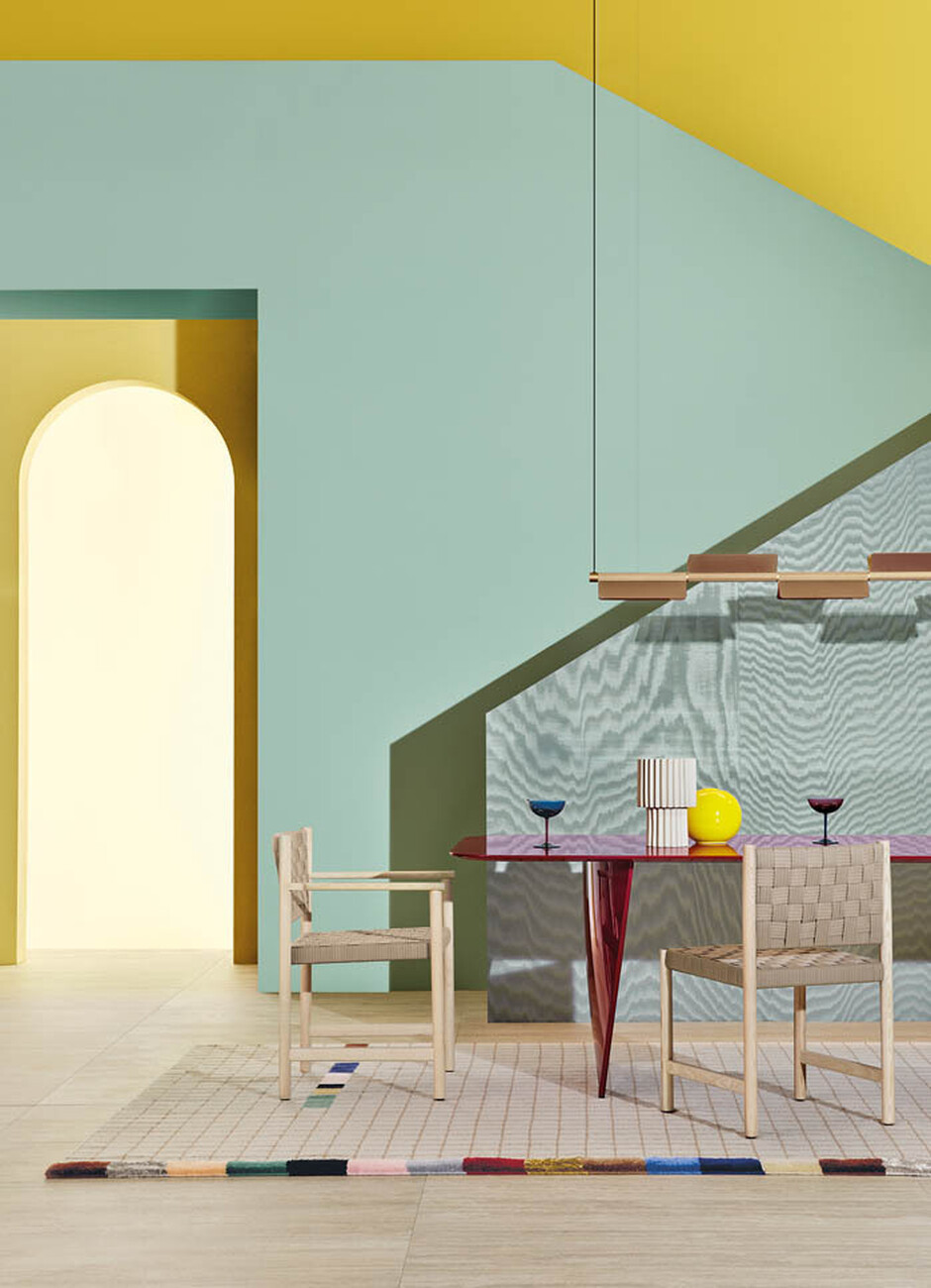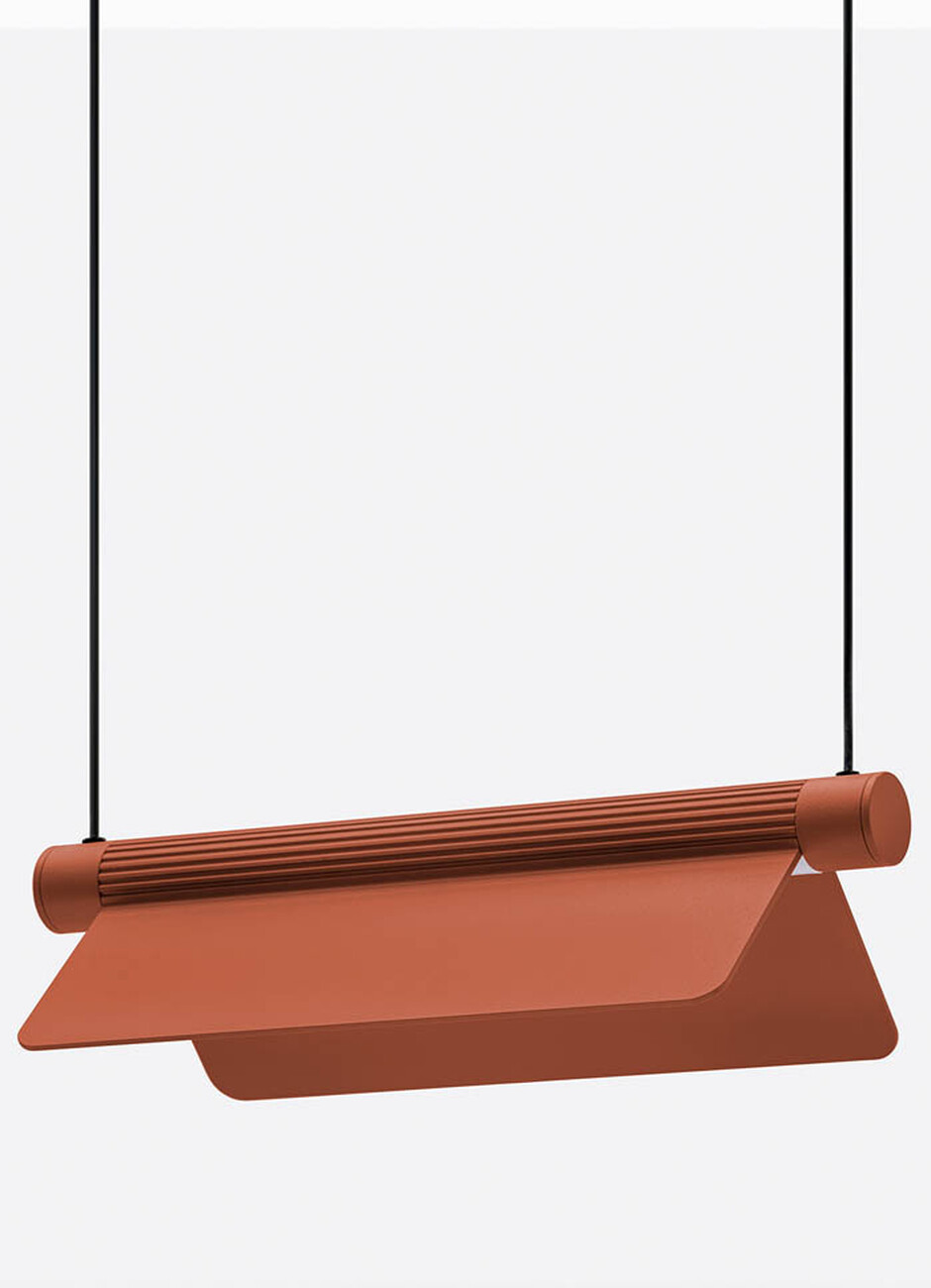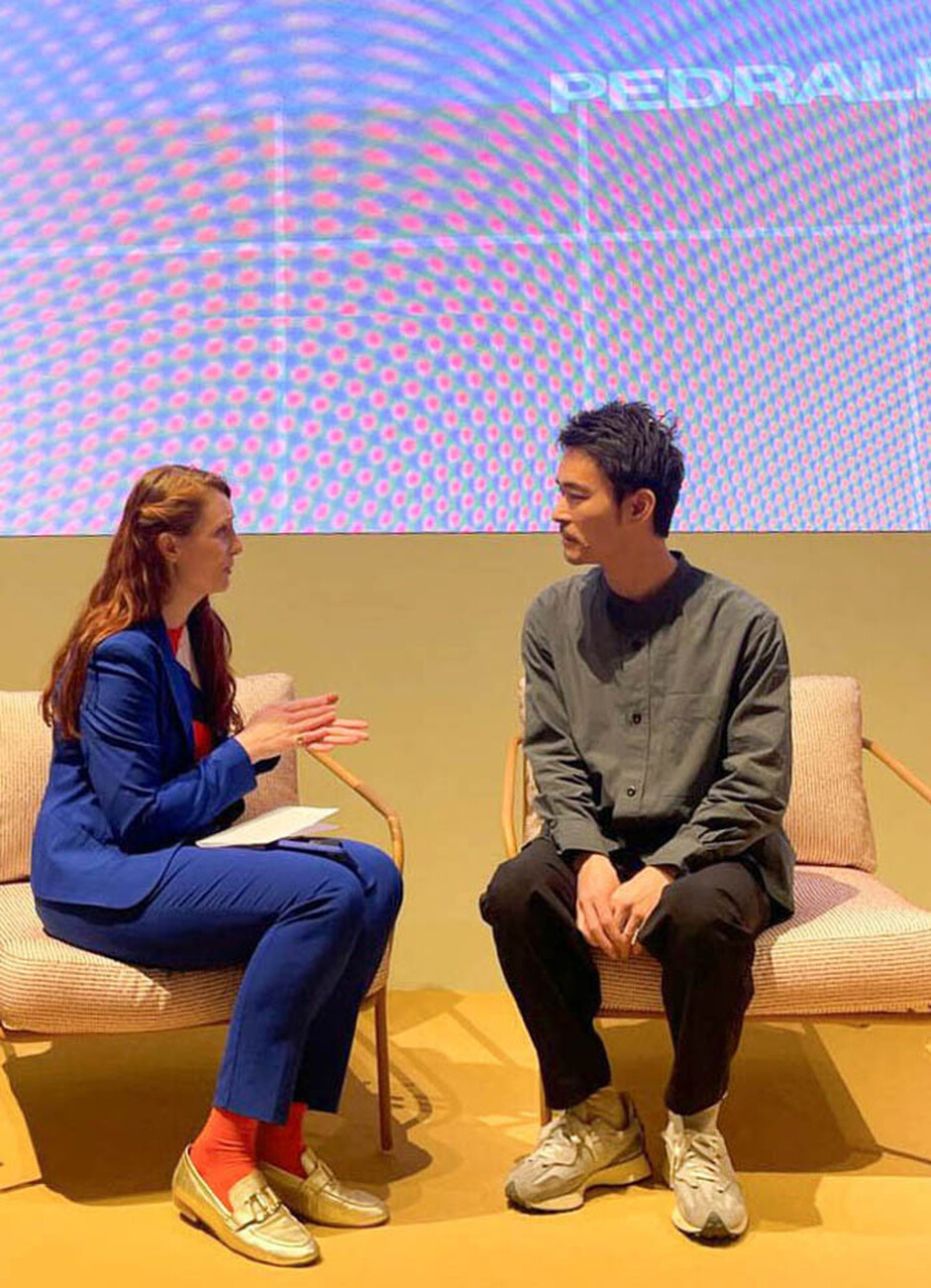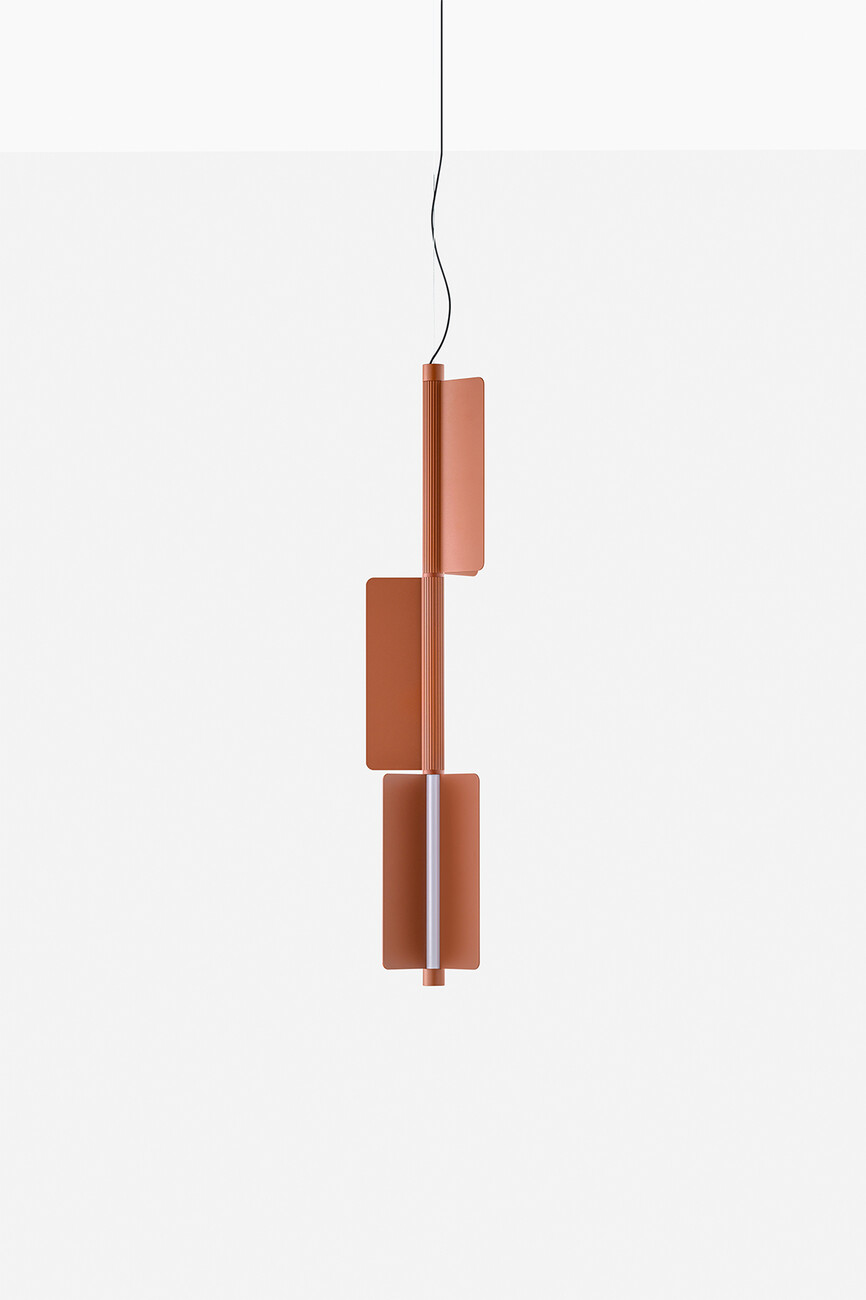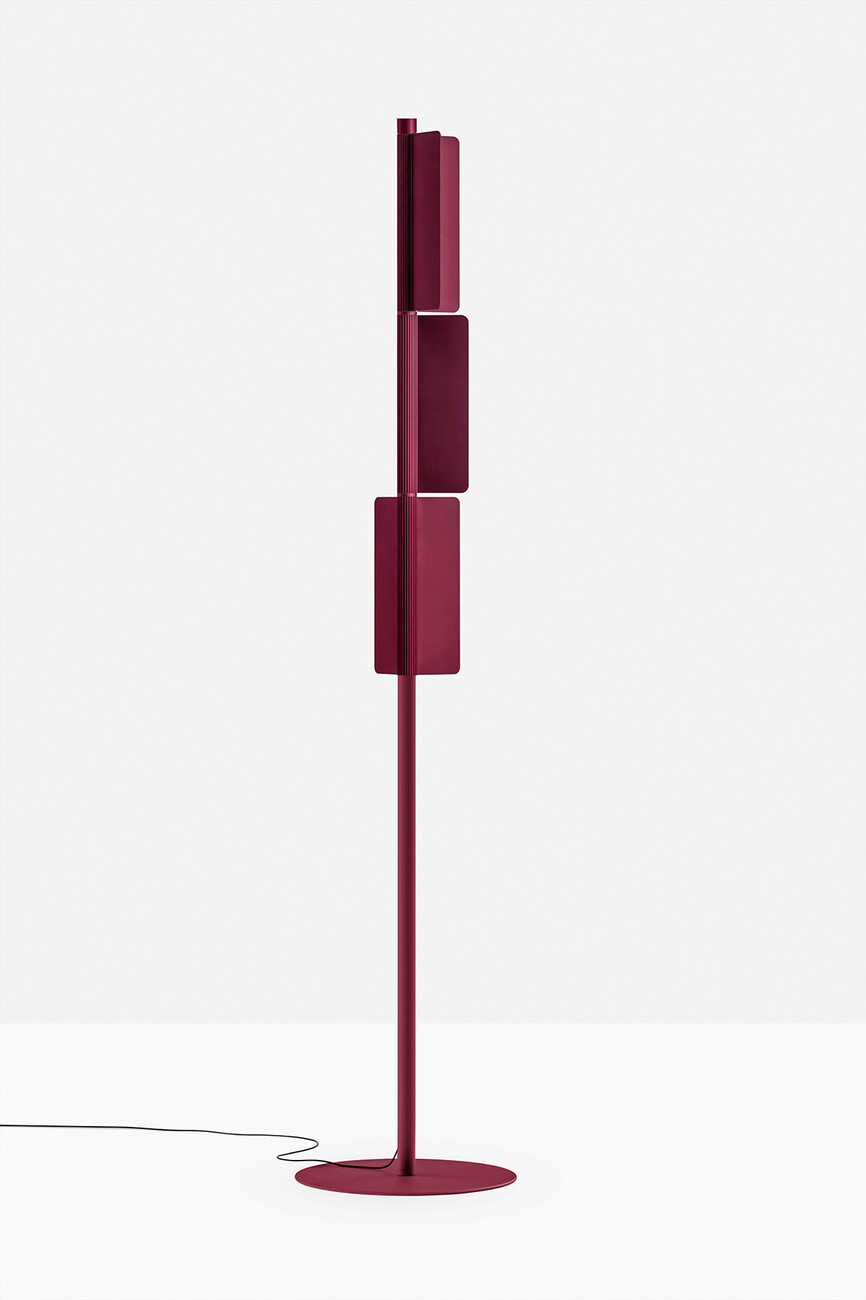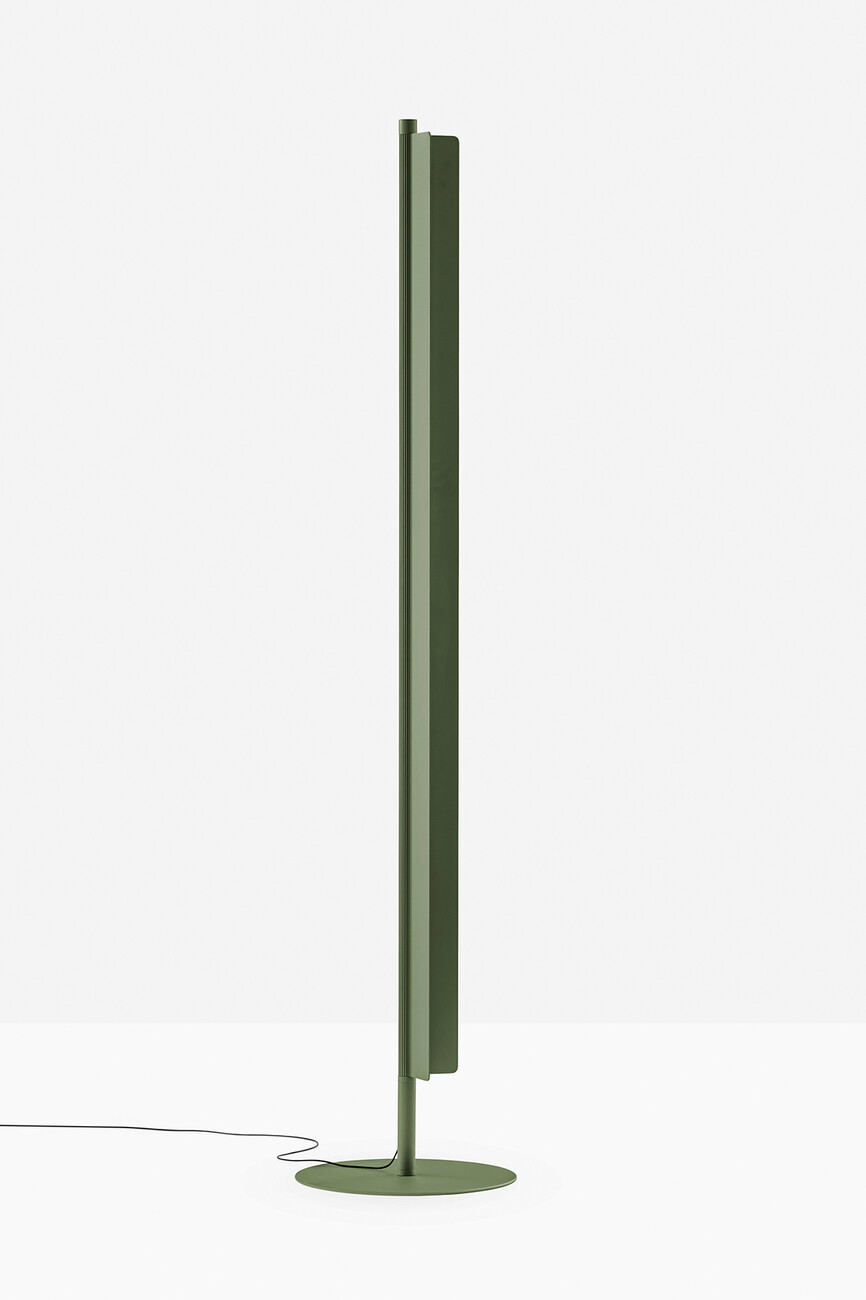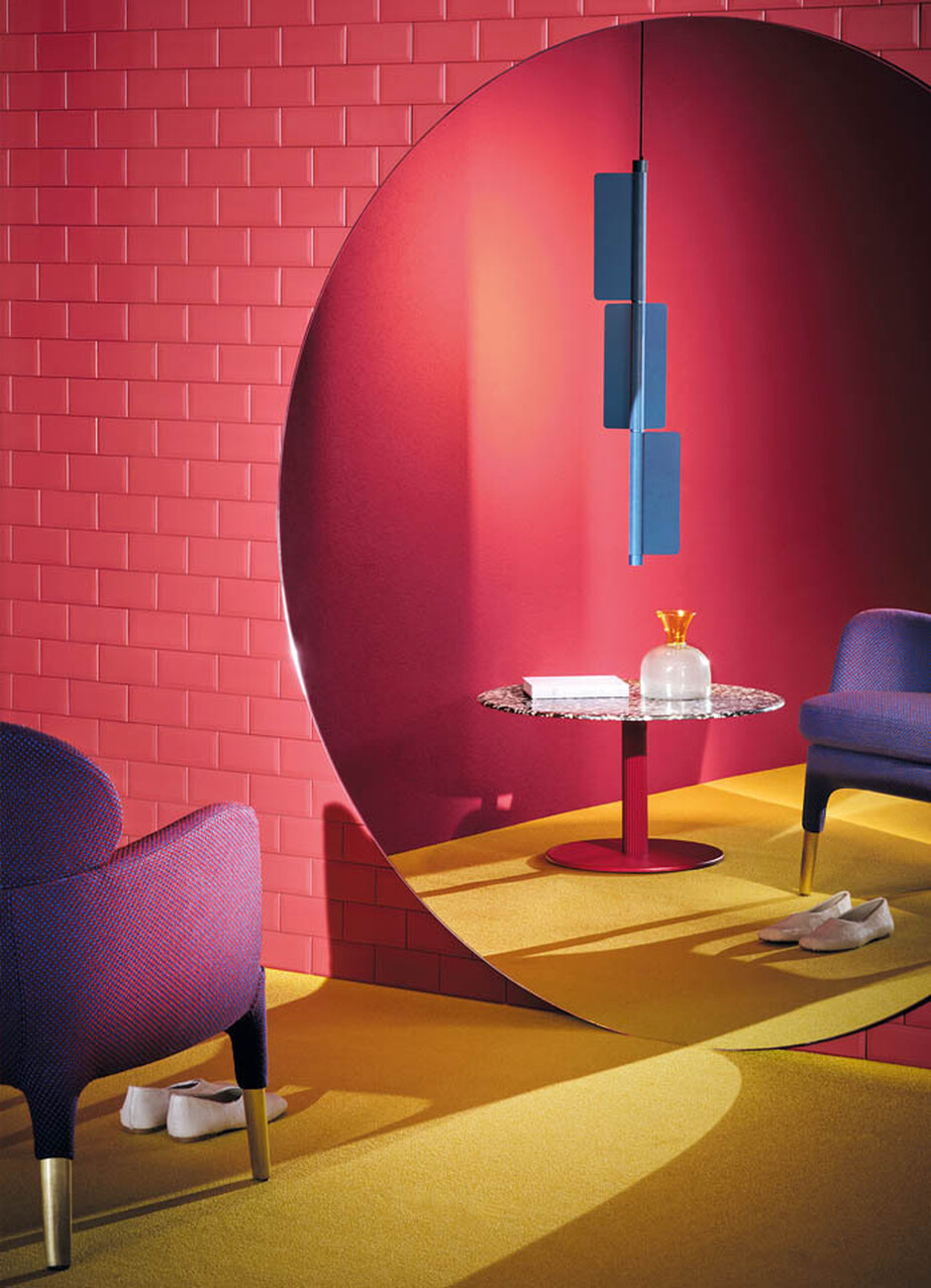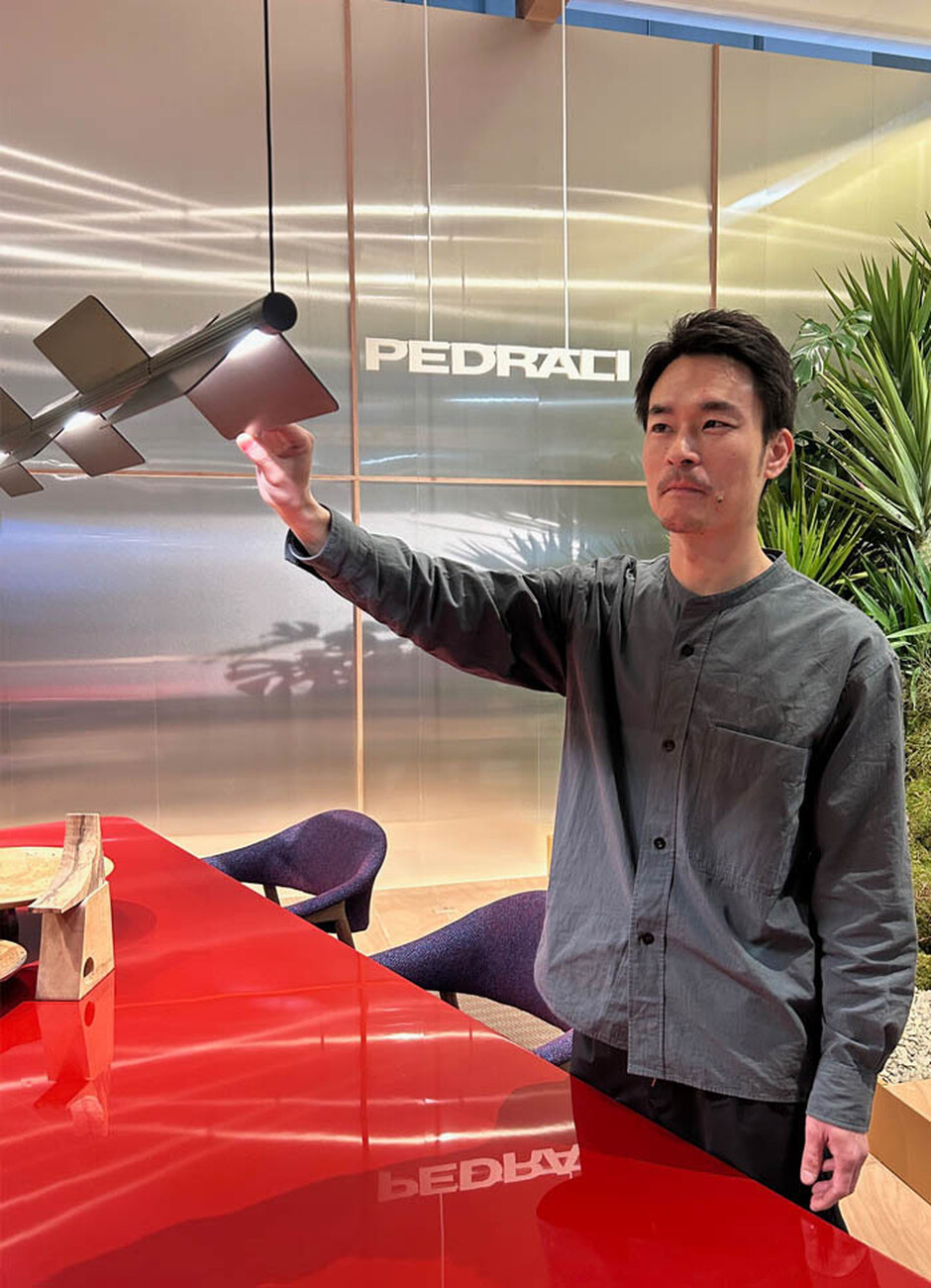Featured
One and many
Anna Moldenhauer: What interested you in working with Pedrali?
Yusuke Kawai: I had always wanted to design a luminaire, but it was difficult for me to find a suitable Japanese company. The way the Pedrali team communicates, not only through their products, but also through their graphics, emotions and colours, quickly appealed to me during my research. I also realised that they didn't yet have many lights in their range, which gave me hope that I would have a chance to present my design to them. And that's how it was.
What did you realise, when you were looking for the right company?
Yusuke Kawai: I learnt that it is very important to think about the company. My design must have a benefit for them, it must fit into the portfolio. So I researched the market and people's needs. The result was that modular lighting would be the best fit and also a sustainable solution. A module can be installed in many different scenarios and used wherever light is needed. In theory, you only have to develop one version that can fulfil all requirements. My design was therefore the result of a lengthy process and market analysis. Fortunately, Pedrali immediately liked my idea.
‘Kawara’ is inspired by the traditional Japanese roof tiles of the same name – what fascinated you about their shape that you wanted to bring into the interior?
Yusuke Kawai: I quickly noticed the shape of the tiles themselves, I find them very aesthetic. And it fitted in well with the themes of sustainability and modular lighting that I had in mind for my design. The traditional roof tiles have a distinctive beauty and wonderful textures. They also combine well with other tiles. All in all, this was a good basis for a modular lighting system. I then interpreted the shape in a modern way and added some functions that are necessary for a lighting fixture.
There is a choice of different lighting system configurations, for example horizontal and vertical suspension as well as free-standing. Each luminaire in the ‘Kawara’ collection is also an individual character within a family. What was your idea behind this?
Yusuke Kawai: If the design starts from one element, you can extend it to many characters.
It can therefore be adapted to any room and any requirement. There are several matt aluminium coatings as well as brass, champagne and satin bronze finishes to choose from, each of which creates a homogeneous image – what was the idea behind the selection of customisation options?
Yusuke Kawai: That you don't have to add anything, but can simply choose from what you have.
The lighting with LED strips is dimmable and the luminaire reflector can be swiveled by 45 degrees, depending on where you want the light to fall. This and the grooved structure of the surface create a haptic interaction with the user. Why was that important to you?
Yusuke Kawai: Perhaps it's because I trained as an industrial designer, which gives me a strong connection to the haptics of materials. The texture of a surface is very important for my work. I am also convinced that it increases the value of a product, if you don't ignore the details. In my opinion, if you can't touch a product, you can't fully understand the material qualities and how it is processed.
You've already mentioned it – you spent many years creating technical devices as an industrial designer. How did this experience and your training influence your style?
Yusuke Kawai: At the beginning of my career, I designed many technical devices such as laptops and smartphones. This work is very precise, as measurements of 0.1 millimetres are partly involved. The same goes for the surfaces – with technical devices, the feel and the variance of colours are important. This has certainly influenced me, as this type of design requires a lot of attention. My work in Germany, on the other hand, was more about seeing the big picture; the approach in German design culture is based on the big idea. My strategy today is therefore a mixture of Japanese, detail-orientated design and the German need for a holistic approach.
What is your starting point, do you work with a mood board, a sketch or directly with the model?
Yusuke Kawai: With research. The information that I receive in this way gives me a lot of ideas, which I then bring to paper and hang on a board so that I get to see them from a distance. This allows me to quickly recognise whether the character is strong enough or whether something is still missing. It's important for me to work quickly so that I don't get stuck on two or three small details.
You teach at Musashino Art University in Tokyo – apart from theory, what is the most important message from practice that you would like to pass on to the younger generation?
Yusuke Kawai: Many students hold on to the first idea they have for an assignment for a long time. This is risky, because the first idea is often not the best one. You can only find out whether it is by developing others and then comparing them. The final result can also be a combination of all the different paths. The important thing is to go down them.
‘Kill your darlings’, so to speak.
Yusuke Kawai: Exactly. It's the focus on the result that counts, what you want to achieve. This improves the quality of the design and at the same time gives students more confidence in their creative abilities. This requires experimentation, which I believe is essential for design.

